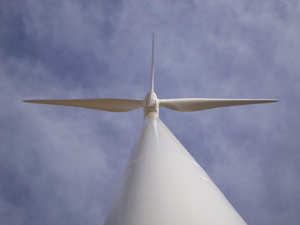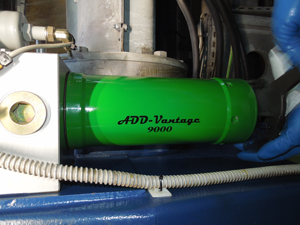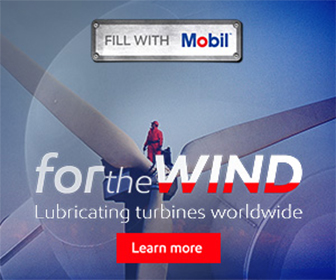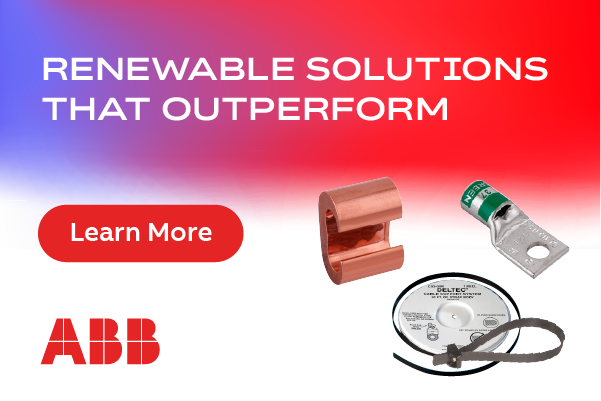Maintaining Turbine Efficiency: Guarding against premature wear
 As wind power has emerged as the fastest growing renewable energy source, technology has been at the forefront, allowing for continued advancements and improvements in the industry. The quality and design of a turbine’s components, after all, affect its ability to endure and sustain reliable power generation over time—which is essential to profitability.
As wind power has emerged as the fastest growing renewable energy source, technology has been at the forefront, allowing for continued advancements and improvements in the industry. The quality and design of a turbine’s components, after all, affect its ability to endure and sustain reliable power generation over time—which is essential to profitability.
Premature wear has been the primary cause of component failure in wind turbines, which has resulted in the need for a quality maintenance program to ensure system productivity and increased uptime.
Defensive driving
The first line of defense against premature wear is a hydrocarbon management program that ensures the quality of the fluids being utilized for a turbine and its gearbox system. It’s also critical that proper storage and transportation of these fluids is maintained to preserve cleanliness and, ultimately, turbine efficiency.
The second line of defense is the use of a quality filtration system, which also aids with fluid cleanliness and component uptime, as well as with contamination. Pre-filtering the hydraulic fluid, lube oils, and coolant before employing them in a turbine is key, as this removes any contamination (the most damaging being 10 microns to submicron), which are inherent in new fluids.
Black Powder, for example, is a hard contaminant that occurs from bacterial and chemical corrosion of the carbon steel pipeline wall. Moisture is the catalyst that creates this corrosion, and the result is the production of iron sulfides and iron oxides in different forms. Black Powder is extremely corrosive, causing damage by seizing valves and damaging the gearbox and a turbine’s components.
In fact, contamination below 10 microns in size has been identified as the leading cause of premature wear in turbine components. With advancements in manufacturing and engineering of turbine equipment, the tolerances of hydraulics and gearboxes have been tightened to sub-micron levels. This increases the need for filtration that offers the ability to remove contamination down to this level.
An insurance policy
 Often the effects of ferrous contamination in hydraulic, pneumatic, and lubrication systems have been understated, while the filtration capability of traditional filters has been greatly overstated in the wind industry.
Often the effects of ferrous contamination in hydraulic, pneumatic, and lubrication systems have been understated, while the filtration capability of traditional filters has been greatly overstated in the wind industry.
In terms of controlling contamination from lubricants and hydraulic fluids, magnetic separation and filtration technology has been prominent. Most magnetic filters work by producing a magnetic field or loading zones that collects magnetic iron and steel particles. However, traditional magnetic filters are made of ceramic, which carry a low strength and are unable to remove any damaging contamination that’s below 10 microns in size.
Another problem ceramics pose is that they come into direct contact with the fluid or oil to yield their maximum magnetic field strength. This creates contamination issues in and of itself, as these magnets are brittle and can crack under vibration or temperature extremes, causing small magnetic particles to flow through a turbine’s system. Eventually, these particles will reach and attach onto ferrous components such as bearings. Despite these downfalls, many original equipment manufacturers (OEMs) in the wind industry still use ceramic magnetic filter rods and drain plugs.
Fortunately, magnet technology is just one example of where technology has advanced over time. Over the past decade or so, rare earth magnets have improved drastically. This has increased the magnetic filters field strength by up to 300%, removing contamination down to sub-micron levels. With this strength, the ability to remove some non-ferrous contamination through static adhesion has been possible. As particles pass through fluid or oil, they gather a static charge. With the increased strength of these rare earth magnets, contamination can be retained by the magnetic filter.
Bad drivers
The gearbox is the heart of a wind turbine. The cleanliness of the fluids herein, and the life expectancy of the gearbox are directly related. The primary wear contaminant is ferrous metal, which, in most cases, only requires a magnetic filter for extraction. By maintaining a high level of purity in the oil, its life expectancy, as well as the component life expectancy, will be extended and the wear cycle is reduced.
The hydraulic system is also integral to the operation of a turbine. With the tightening tolerances in these systems, contamination should be removed down to sub-micron levels as well. This can be achieved by a combination of traditional depth media filtration and magnetic filtration. In some cases, only magnetic filtration is required, such as with coolant systems, where there’s traditionally no filtration present (or, if present it’s only effective to 30 microns).
When employed, rare earth magnetic filters are able to reduce downtime, maintenance costs, and improve a turbine’s environmental impact. They’re easily cleaned, and have an operational life of 10-plus years. Rare earth magnetic filtration solutions have been employed in gearbox and hydraulic applications for about 15 years, with customers realizing up to 25% reduction in maintenance costs, while extending component and fluid life by two to three times.
Final thoughts
Wind is a great environmentally friendly energy source, but only so far as the power produced. The manufacturing and disposal of the depth media filers used in these turbines is damaging to the environment. Over 80% of these filters end up in landfills—all of which contains four to six ounces of oil that seeps into the ground waters of our landfill sites.
When advanced technology exists that compliments and increases the positive impacts of wind energy and friendliness to the environment, why not take notice?
One Eye Industries Inc.
www.oneeyeindustries.com
Author: Roger Simonson
Volume: May/June 2014









